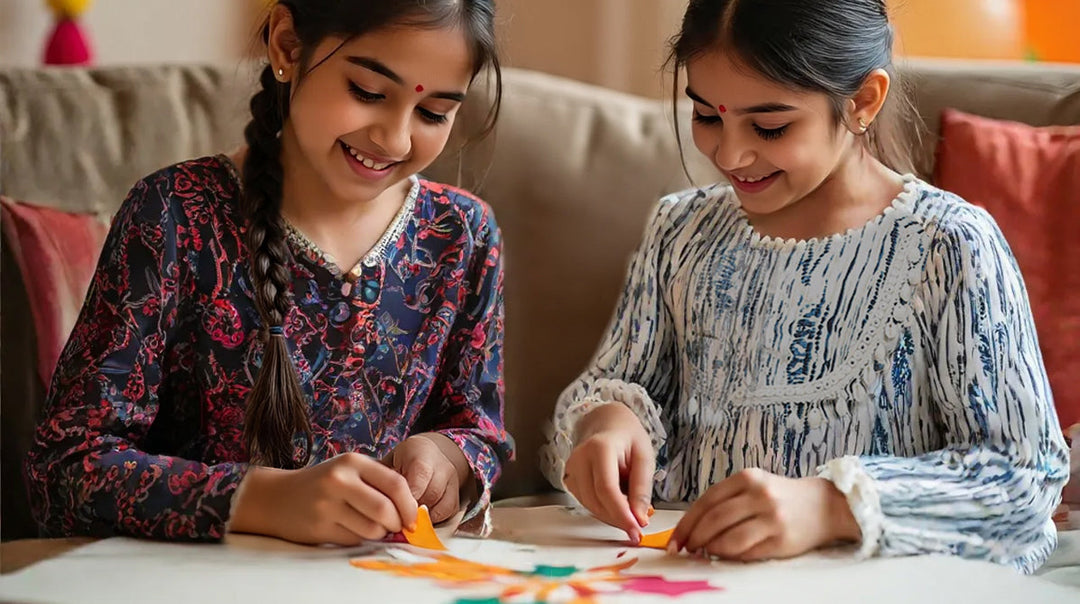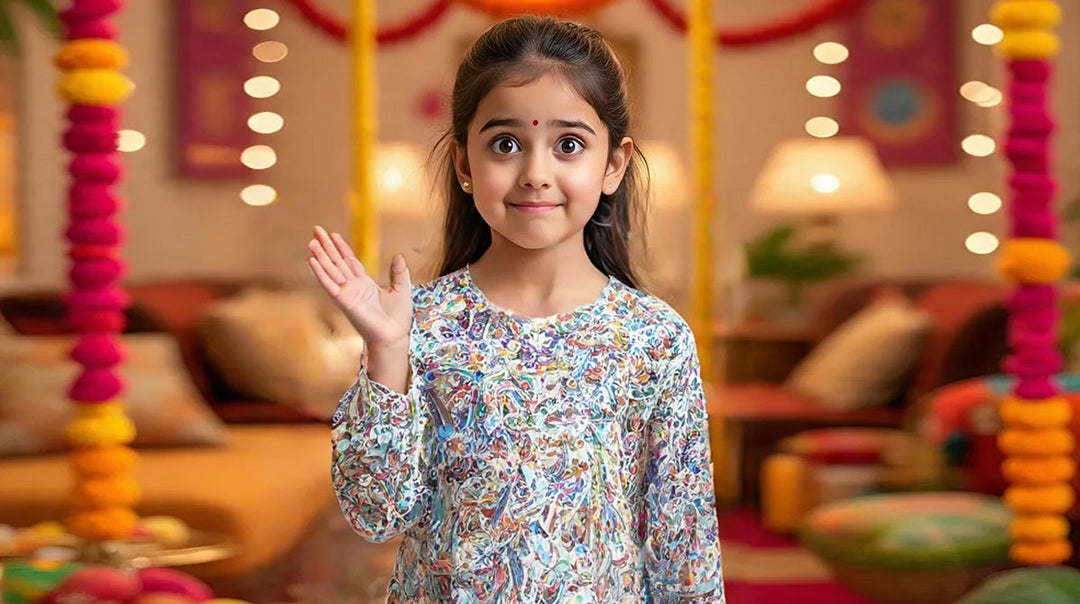Growing Green:Tips for kids to protect the environment and learn about sustainability

Environmental conservation is a pressing issue, especially for today’s generation. Kids today have grown up in a world where climate change is a reality and where protecting nature is even more crucial than it was ever before. As we grapple with how to save Mother Earth, it is important and advisable also to involve children in climate conservation. Suppose we instill the habit from an early age. In that case, kids are more likely to grow up into environmentally responsible adults who take care of nature and engage in an eco-friendly lifestyle.
Why Teaching Kids About the Environment is Important?
Teaching children about the environment is important for a myriad of reasons. Firstly, early exposure to eco-friendliness will make children more empathetic to nature’s needs. They will become kinder, conscious individuals who protect animals and plants. Nature is also quite diverse and appreciating its richness will make kids more critical and creative thinkers.
Today’s children are going to grow up to face the reality of climate change. By sensitizing them about the environment, they will become involved in their local communities and become advocates for the environment. If you teach them young, these values will stick with them as they grow up and hence they will develop good long-term habits and also teach their own peers about environmental conservation.
How to Make Kids More Environmentally Aware
There are many ways to teach children about environmental issues so that they can help solve problems and take action to help save them. Some ways to make children more environmentally aware are:
Make Children Spend Time Outdoors
Today, our lifestyles are often restricted to indoor areas and we do not spend enough time outside. It is important for children to spend time in the natural world- under the sun or in parks, mountains, beaches and other natural spaces. It is only by doing this that children will come to appreciate the beauty of nature.
Once children realize how extraordinary and special the natural world is, they will become more curious and engaged. This will help spawn an interest in sustainability.
Watch Environmental Documentaries and Movies
You can make learning about the environment educationally fun for your children. Watching movies and documentaries about the environment will help kids be intellectually stimulated. For instance, National Geographic offers a wealth of engaging and informative content.
Such films have beautiful visuals that captivate the young audience. They also present fascinating facts that can inspire kids to care more about the planet. Some popular ones include “Planet Earth," "Our Planet," and "The Blue Planet." There are also movies children can watch such as “Wall-E” which is about saving the environment.
Do Gardening with Them
One way to make your children environmentally conscious is to help them develop a green thumb. Gardening can either be done in your local garden or you can plant some seeds in pots and place them on your own balcony. Ultimately, garden in a way that is convenient and accessible based on what type of space you live in and involve your child in the process.
Teach children about how plants grow, make them water the plant, teach them about the importance of sunlight and oxygen and watch their eyes fill in wondrous adoration as their plants grow!
Take Them to See Animals
Another way to appreciate the diverse fauna present on Mother Earth is to expose them to it by taking them to a zoo, an aquarium, or a safari. When children see real animals, they will realize how big the animal kingdom really is. They will realize animals are living beings that are not so different from us and thus learn that we should take care of them.
If there are no zoos, aquariums or safaris near you where you can take them, you can also take them to a museum where they will learn about the history of animals such as dinosaurs.
Teach Them About Respecting the Environment
It is important for children to learn that the world is vast beyond humans. In order to do this, they have to learn to think of the environment and nature as its own entity separate from us. Upon doing so, they will learn to treat animals nicely, not pluck flowers or leaves off plants, and not throw waste anywhere but in the dustbin.
To do so, inspire them by engaging in environmentally friendly actions like switching off the lights, turning off running taps, and planting trees. Children learn by seeing and doing what their parents do. You can also talk to them about climate change in a candid, reflective manner and make simple analogies about how the Earth is our home which is why we should help clean it.
Consider Going to Local Environmental Events
There might be local events such as hikes, tree planting drives, feeding stray animals, raising money for the environment, or general celebrations of nature. These often happen on Van Mahotsav as well as on Earth Day. By going and attending such events, children become responsible custodians of the environment.
It is important for children to be involved in community efforts such as these, to learn generally about the importance of unity and teamwork. Additionally, the best way to help the environment is for each of us to do our part and inspire others to do the same.
Tips for Children to Protect the Environment
There are many ways in which kids themselves can help protect the environment and become more sustainable. Some tips for children to engage in environmental conservation include:
Reduce, Reuse, and Recycle
We live in a throwaway culture. We tend to buy new things and throw out old things. By thinking creatively and being mindful of consumption habits, children will buy things that are necessary i.e. reduce, and come up with innovative ways to reuse their old things. They can also learn about biodegradable vs non-biodegradable items, which will allow them to learn about the process of recycling.
Plant Saplings
Planting a sapling, which can grow into a tree, is quite simple. Taking the help of a parent or a teacher, children can plant a seed in the ground in an ideal spot and let it grow. If the sapling is planted locally or within a house, then the child can water it themselves. Otherwise, they will know that despite deforestation, there is hope because new trees are being planted by good children like them every day.
Raise Environmental Awareness in School
Children can teach other kids about the environment and increase awareness. The best way to do this is by getting involved in school. Children can take part in plays, dances and celebrations about the environment. They can ask teachers questions and encourage more learning about the environment. They can go on field trips and even raise funds for environmental causes.
Take Part in An Environmental Cleanup and Segregate Trash
If you live near a dirty beach or park, there may be local cleanups that involve cleaning up trash. Additionally, children should never litter and if a stranger throws something, they should politely call them out and throw their litter themselves. They should also learn about the importance of segregating waste into different categories so it can be properly recycled.
Make The Best Out of Waste
Children are imaginative. They can see the potential in items that might otherwise be considered waste. Kids can transform everyday items into useful or decorative objects through simple DIY projects. For instance, they can use old newspapers, magazines, and cardboard to create art projects like paper mache sculptures or homemade greeting cards. Another great idea is to repurpose old clothes and fabric scraps into new items such as tote bags, pillow covers, or even pet toys.
Practice Environmentally Friendly Habits
The best way to save the environment is by changing our daily lifestyle. Children should turn off lights when leaving a room, unplug devices not in use, and use reusable water. They should turn off the tap when it is not being used, use both sides of the paper, and learn about the importance of carpooling.
By practicing these habits, kids can contribute to a sustainable future and develop a lifelong respect for the environment.
Environmental conservation is crucial for today's generation, who will face the realities of climate change from an early age. Engaging children in activities that promote sustainability not only fosters empathy towards nature but also cultivates good habits that will lead to a lifetime of environmental stewardship. Through genuine efforts, children can play an active role in creating a sustainable future and protecting the environment.
Engaging in fun activities that encourage sustainability fosters a love for the environment in children. Recognizing how important conserving nature is, Spunkies believes in providing children with comfortable and stylish clothing so they can confidently embark on their eco-friendly adventures. Our clothes for kids are made keeping sustainability in the forefront- our timeless clothing is meant to last a long time and is made from ethically sourced, premium fabrics like certified organic cotton or recycled polyester. Moreover, our clothing is meticulously crafted in-house: from knitting to dying to printing to stitching. This dedication guarantees that the clothing your child receives is superior and of exceptional value. So, you can safely choose Spunkies if you want to let your kids express their imagination while embracing sustainable living!





